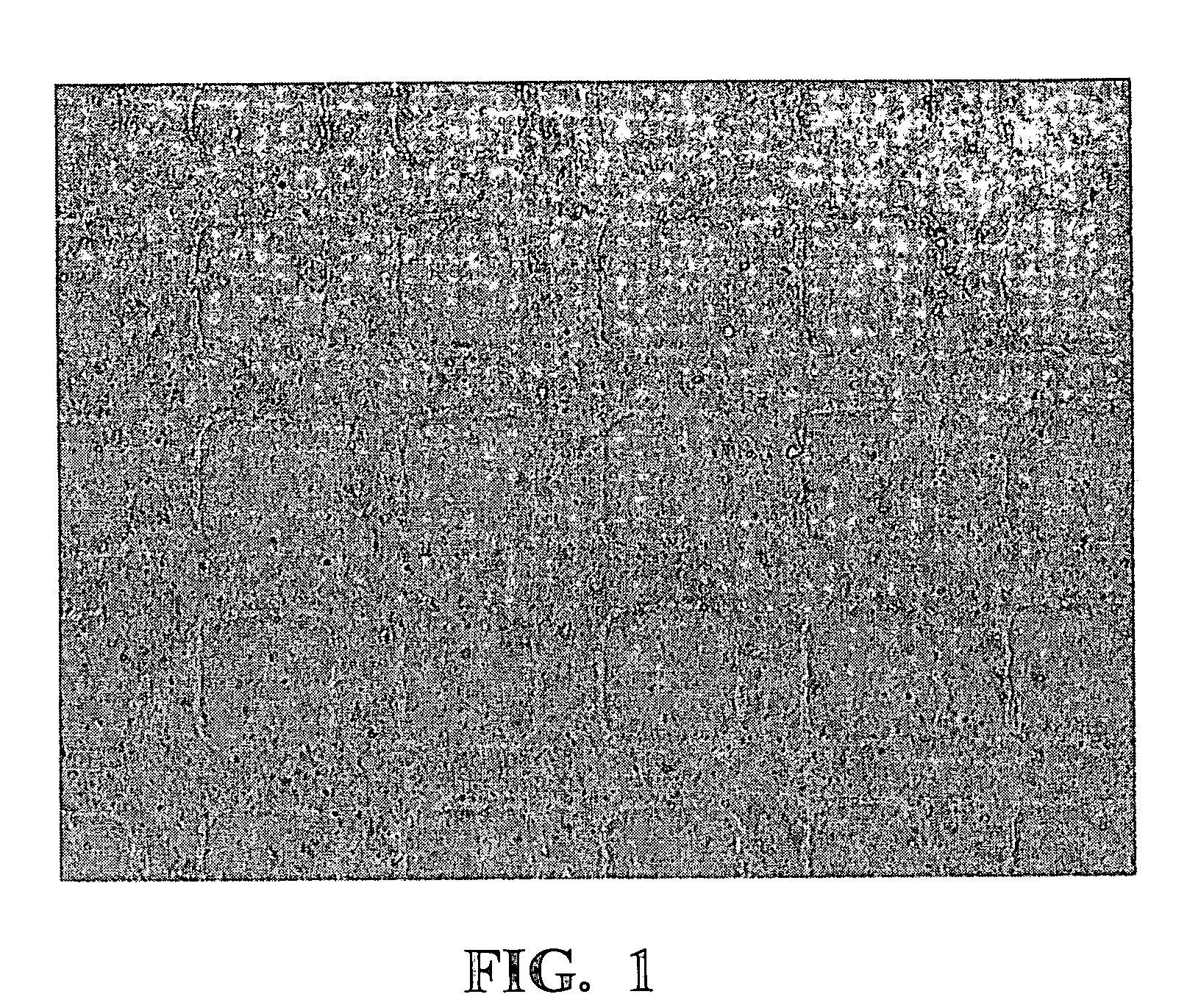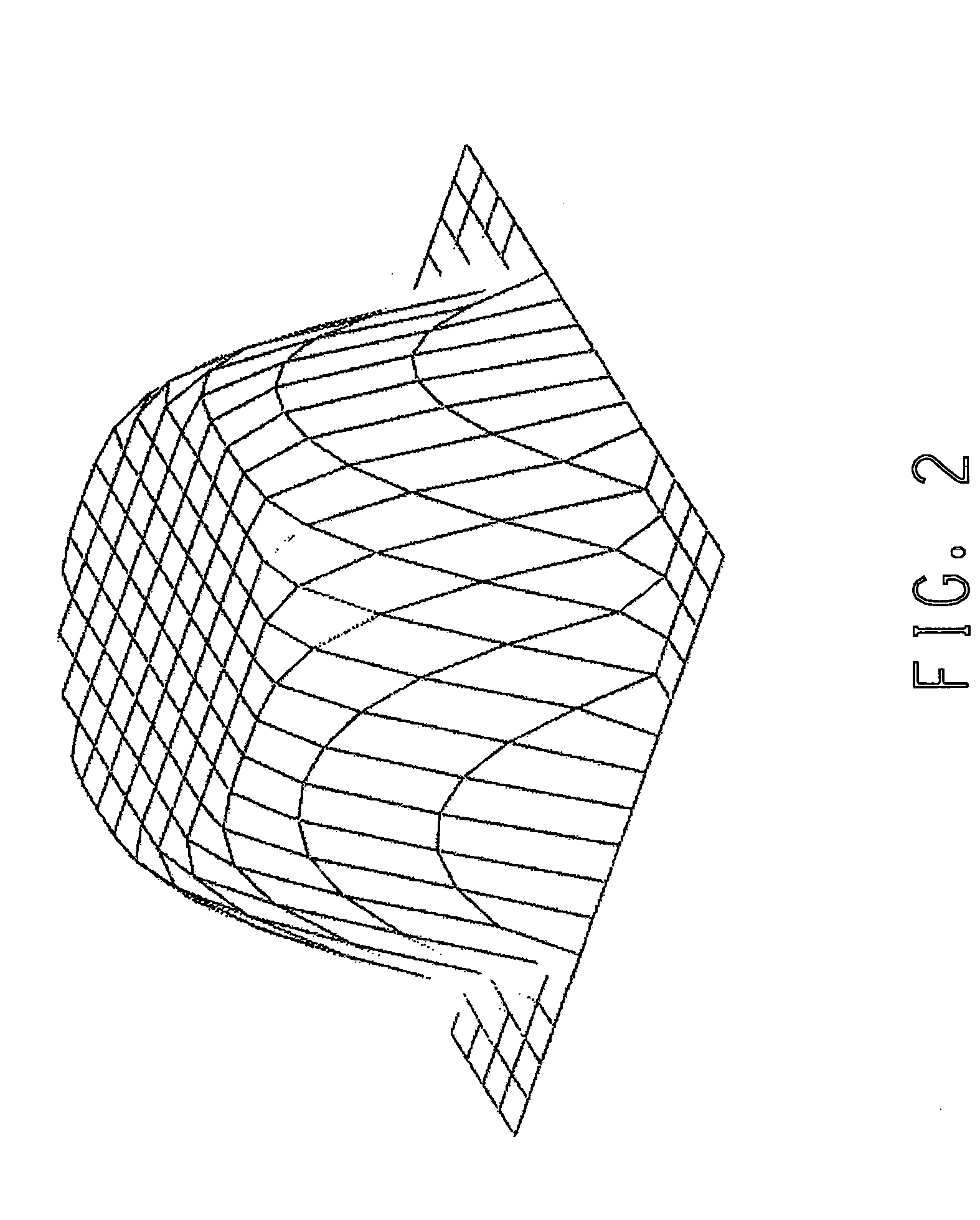Embossed high modulus encapsulant sheets for solar cells
a solar cell and encapsulant technology, applied in the field of thermoplastic film or sheet, can solve the problems of difficult to choose an encapsulant layer, inconvenient to obtain edge seals, air can become trapped within the module, etc., and achieves less dirt accumulation, high de-airing efficiency, and low haze
- Summary
- Abstract
- Description
- Claims
- Application Information
AI Technical Summary
Benefits of technology
Problems solved by technology
Method used
Image
Examples
example 1
[0117]The embossed sheet structures noted below in Table 1 were prepared on a 24 inch width Sano multilayer coextrusion line equipped with embossing rolls utilizing common art sheet formation processes. This essentially entailed the use of an extrusion line consisting of a twin-screw extruder with a sheet die feeding melt into a roll stack. The rolls have an embossed surface pattern engraved into the metal surface which imparts to varying degrees a reverse image of the surface texture onto the polymer melt as it passes between and around the textured rolls. Both surfaces of the sheet were embossed with a pattern with the following characteristics; Mound average depth 21+ / −4 micron; Mound peak depth 25+ / −5 micron; Pattern frequency / mm 2; Mound width mm 0.350+ / −0.02 mm; and Valley width 0.140+ / −0.02 mm.
[0118]Surface roughness, Rz, can be expressed in microns by a 10-point average roughness in accordance with ISO-R468 of the International Organization for Standardization. Roughness mea...
example 2
[0121]The embossed sheet structures noted below in Table 2 were prepared as described above for Example 1.
TABLE 2Trilayer Sheet Structures.Outer LayersInner Layer Example(1 mil (0.026 mm) thick)(18 mils (0.4 mm) thick)AAIonomer 3Ionomer 1ABIonomer 4Ionomer 1ACIonomer 5Ionomer 1ADIonomer 3EBA 1AEIonomer 4EBA 1AFIonomer 5EBA 1AGIonomer 1Ionomer 6AHIonomer 1Blend 5AIIonomer 1EBA 1AJIonomer 1EMA 1EBA 1 was a poly(ethylene-co-n-butyl acrylate) with 27 weight percent n-butyl acrylate and a MI of 4 g / 10 minutes, (190 C., ISO 1133, ASTM D1238).Ionomer 6 was a poly(ethylene-co-iso-butyl acrylate-co-methacrylic acid) with 10 weight percent iso-butyl acrylate and 10 weight percent methacrylic acid and neutralized with 16 percent zinc ion with a MI of 10 g / 10 minutes, (190 C., ISO 1133, ASTM D1238).Blend 5 contains 50 weight percent of Ionomer 1 and 50 weight percent of Ionomer 6.EMA 1 was a poly(ethylene-co-methyl acrylate with 30 weight percent methyl acrylate.
[0122]A variety of laminate stru...
example 3
[0123]The embossed sheet structures noted below in Table 3 were prepared as described above for Example 1.
TABLE 3Trilayer Sheet Structures.Outer LayersInner LayerExample(5 mil (0.13 mm) thick)(10 mils (0.25 mm) thick)BAIonomer 3Ionomer 1BBIonomer 4Ionomer 1BCIonomer 5Ionomer 1
[0124]A variety of laminate structures (4 inch by 4 inch) were produced from each embossed sheet described above to demonstrate various solar cell structures as described above for Example 1. The laminate structures included glass / Example / glass, fluoropolymer film / Example / glass, aluminum sheet / Example / glass, aluminum sheet / Example and glass / Example.
PUM
| Property | Measurement | Unit |
|---|---|---|
| Length | aaaaa | aaaaa |
| Length | aaaaa | aaaaa |
| Length | aaaaa | aaaaa |
Abstract
Description
Claims
Application Information
 Login to View More
Login to View More - R&D
- Intellectual Property
- Life Sciences
- Materials
- Tech Scout
- Unparalleled Data Quality
- Higher Quality Content
- 60% Fewer Hallucinations
Browse by: Latest US Patents, China's latest patents, Technical Efficacy Thesaurus, Application Domain, Technology Topic, Popular Technical Reports.
© 2025 PatSnap. All rights reserved.Legal|Privacy policy|Modern Slavery Act Transparency Statement|Sitemap|About US| Contact US: help@patsnap.com



